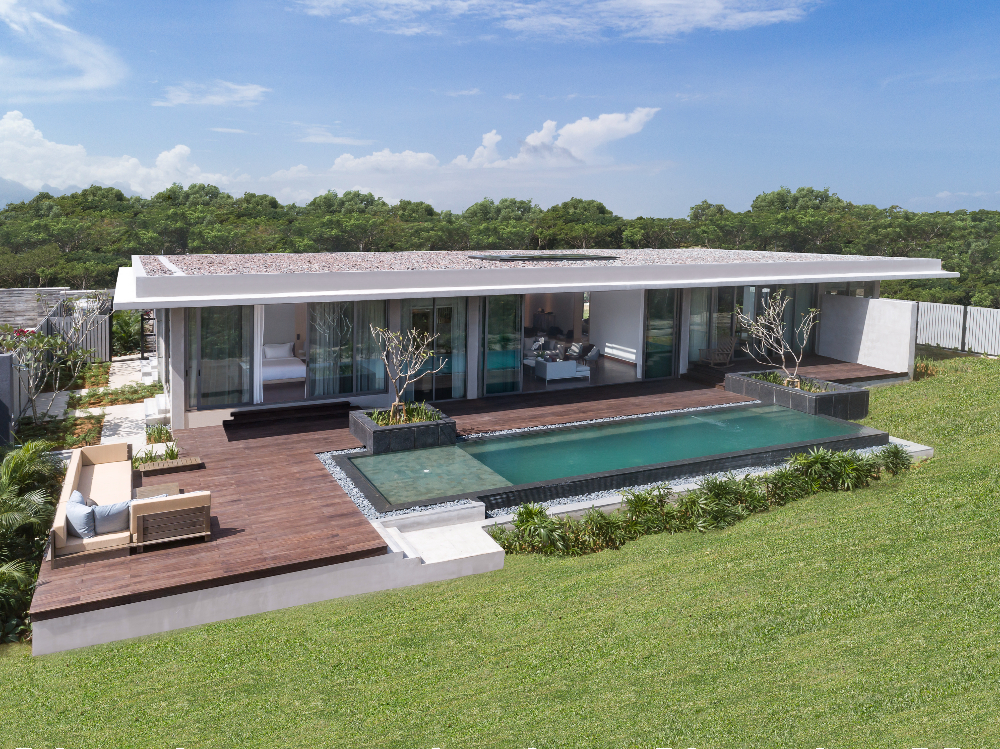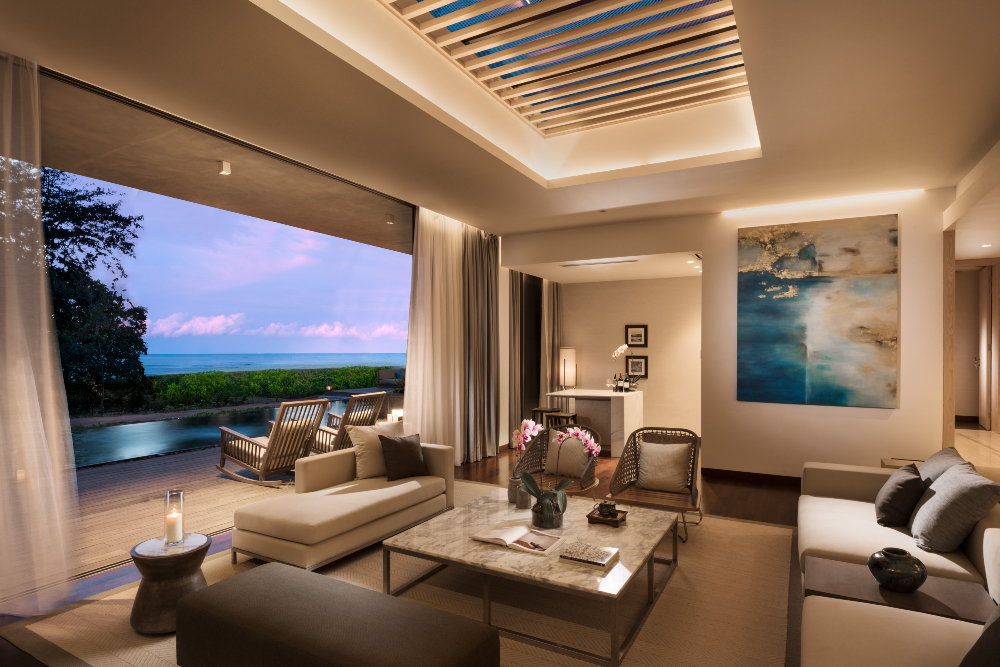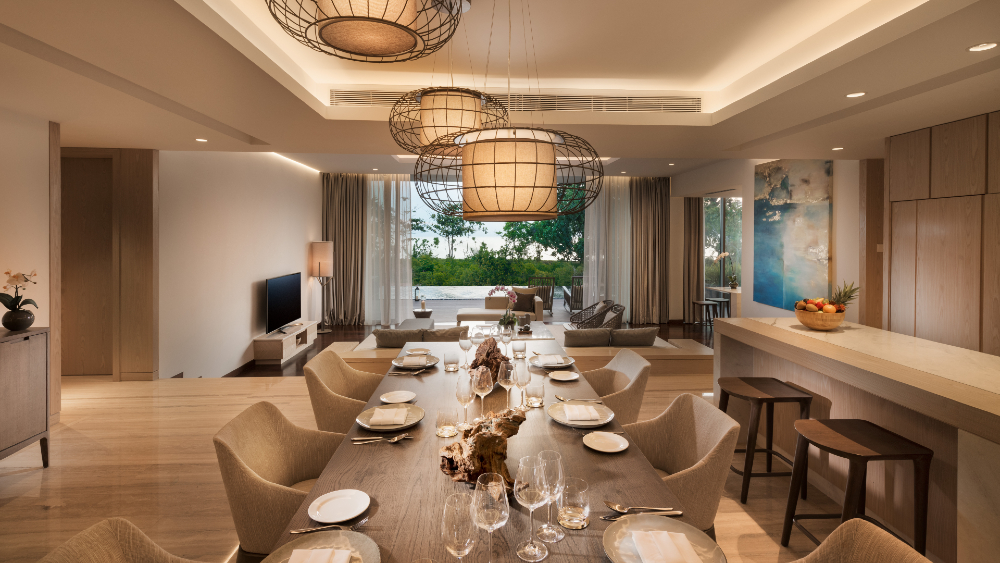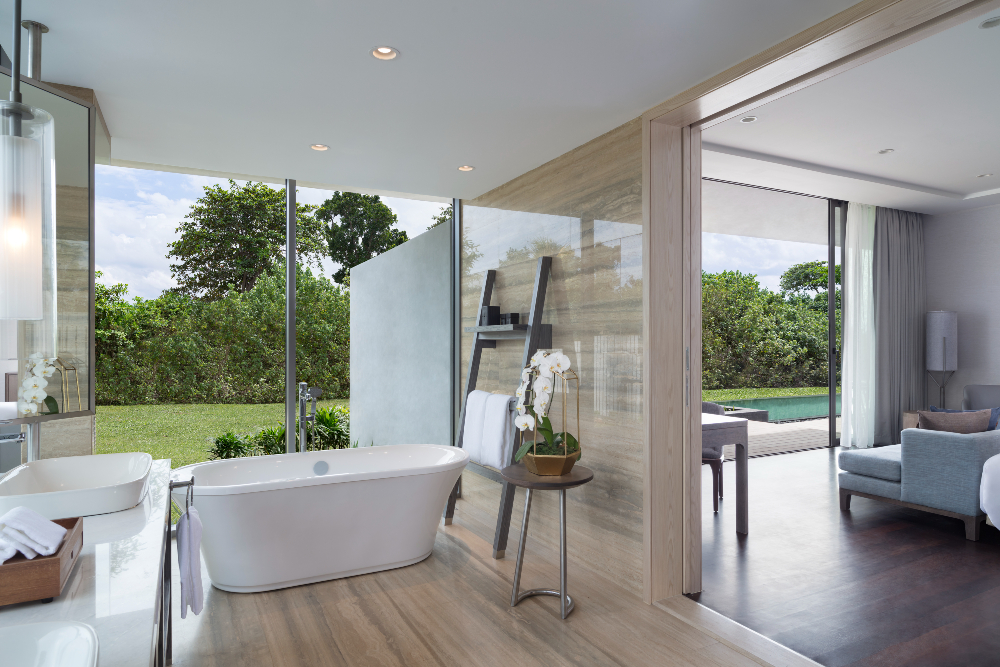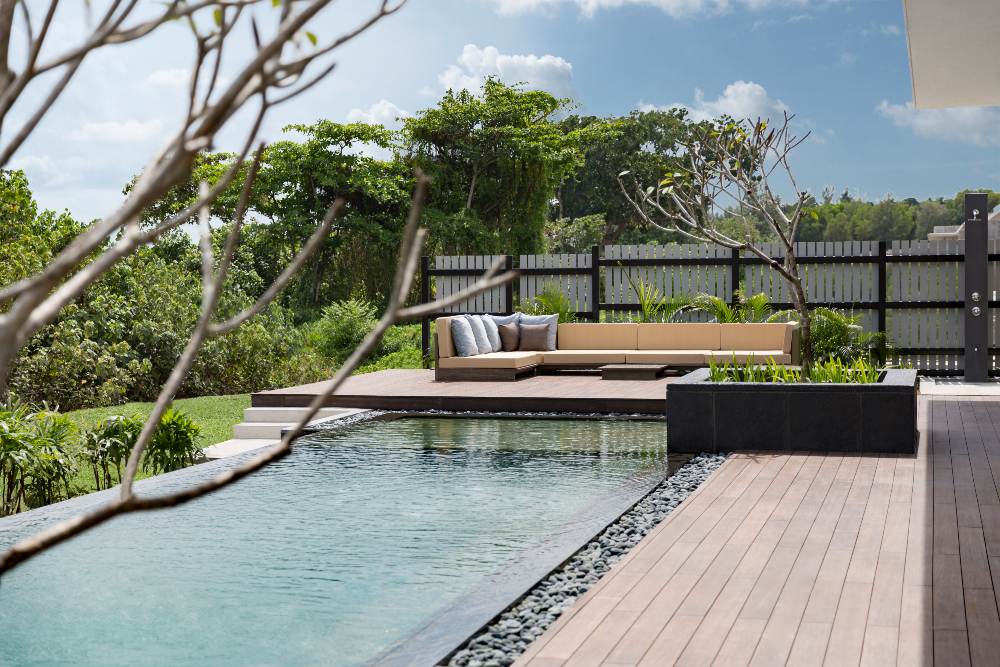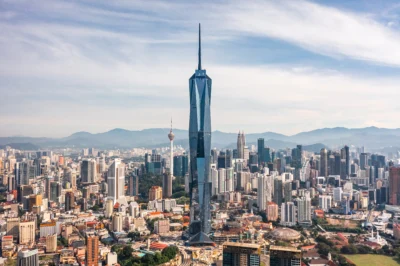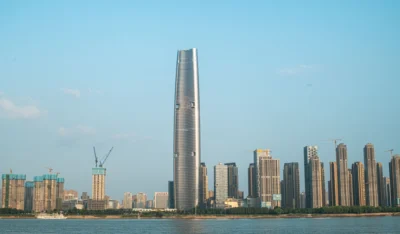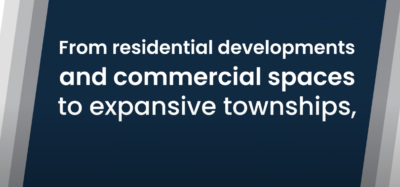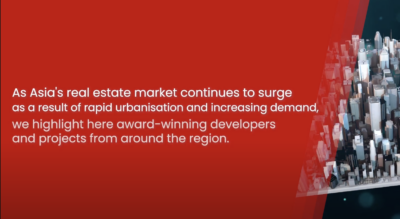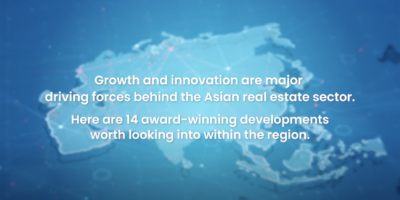Live large in Malaysia’s next big resort destination
Ingenious landscaping and considered nods to Malaysia’s architectural and cultural heritage are integral to the package at Anantara Desaru Coast Residences in Johor
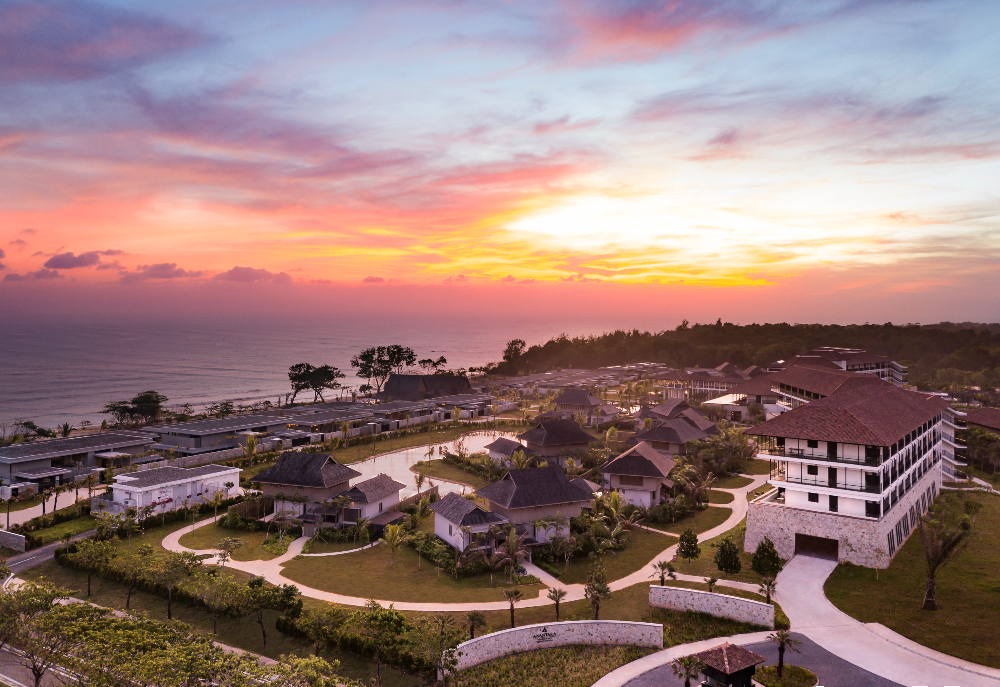
Malaysia is making Desaru Coast great again.
A favourite of holidaymakers from nearby Singapore since the 1980s, the 17-kilometre beach-fringed strip in southeastern Johor has pried the spotlight from the peninsula’s other tourism hubs, with a little nudge from Khazanah Nasional Berhad, Malaysia’s sovereign wealth fund. It is, as former tourism minister Mohamed Nazri Bin Abdul Aziz says, an attraction the government has been “banking on”, with an international ferry terminal due to open in 2021.
Themed Attractions Resorts & Hotels Sdn Bhd (TARH), a unit of Khazanah Nasional Bhd, is transmuting Desaru Coast into a $1.1bn premium integrated destination resort. Garlanding 1,578 hectares (3,900 acres) of the peninsula, the Desaru Coast master development opened to the public in 2016 with a 27-hole golf course designed by South African great Ernie Els and, a year later, an 18-holer designed by Fijian maestro Vijay Singh. The 25-acre Adventure Waterpark, one of the world’s biggest theme parks, followed suit in 2018, as did a 23-acre waterfront retail village.
Big-hitting hospitality brands have washed ashore, too, from Hard Rock Hotel to The Westin and One&Only. Partnering with TARH, Thai development giant Minor International opened the Anantara Coast Resort & Villas in 2019, followed by the adjacent Anantara Desaru Coast Residences last year.
The latter, a boutique collection of 20 seaside pool villas managed and serviced by Anantara, marks Minor International’s first foray into luxury real estate development in Malaysia. “From a development perspective, we are mindful that we are investing in an emerging, up-and-coming location as a first mover,” says Micah Tamthai, vice president of real estate at Minor International. “Whilst there is some work that we need to do to raise more awareness on the destination, Malaysian travellers are also increasingly taking up the opportunity to discover up-and-coming destinations like Desaru Coast.”
Minor International set the $195.6m development into motion as early as 2014 when the company shortlisted WOW Architects to join the project. The Singapore-based design consultancy won the invitation-only bid with its progressive, eco-sensitive masterplan concept for the branded residences. “We feel that the way forward for new resort developments is an eco-awareness principle that must be purposeful and engaging to its guests, residents and locality,” says Wong Chiu Man, managing director at WOW Architects.
The developer instructed the design team to cast Anantara Desaru Coast Residences in the mould of indigenous architecture and craftsmanship. The development has been master-planned as a triumvirate of zones that reference Malaysia’s rich heritage of architectural movements: Colonial Plantation, reflecting late 19th century Malaya; Malay Kampung House, defining vernacular culture; and the Beach, mirroring the geography of the peninsula.
“The team of architects, interior designers, and landscape consultants collaborated to develop a shared vision and a common design language, comprising motifs, colours and a restrained but relevant material palette, to evoke an authentic but modern resort and residential experience that remembers the past but also looks forward to the future,” says Tamthai.
The villas trade on frame-worthy views of the South China Sea, although the topographical quirks of the 304,000 square foot site made them labour-intensive goals at first. “The original site was relatively flat, and we had to design a masterplan that allows for ocean views throughout the site,” recounts Wong. “This was achieved through shaping the terrain of the site by raising the ocean-view ‘beach residence villas’ to a higher platform level as well as creating a natural stone and landscaped hotel podium that blends into the topography while maintaining the natural appearance of the landscape.”
The intent was to create inspiring, open, spacious, and well-ventilated indoor and outdoor spaces which are key features to tropical living
Twelve three-bedroom pool villas and eight four-bedroom pool villas, in built-up sizes ranging from 3,100 sq ft to 6,426 sq ft, have since risen onsite. Four of the four-bedroom villas sprawl over a single storey, with master bedrooms that have direct access to beach and pool alike. The four-bedroomers also have four two-storey variants, featuring multi-purpose spaces with vantage points of the ocean.
Expansive, floor-to-ceiling glass facades marry the panoramas of the sea to the interiors and maximise passive lighting and natural ventilation. Living, dining and family spaces spill onto the pool terraces. “The intent was to create inspiring, open, spacious, and well-ventilated indoor and outdoor spaces which are key features to tropical living,” says Wong.
Malaysia’s own EDC Interiors opted for decorative and furnishing choices that recall fishing nets, weathered wood, and the cerulean blue of the ocean, wresting inspiration from Desaru Coast’s origins as a fishing area. “While contemporary, we wanted the design to also reflect the infusion of local touches,” says Vincent Koh, principal of EDC Interiors. “Inside each villa, we created a tranquil beach hideaway with a timeless aesthetic that pays tribute to local traditions and culture.”
Matte beige stone floors, brown and grey wood, and textured fabric further anchor the interiors in nature. “The elegant, subtle colour palette, materials, and décor allow the panoramic coastal scenery to be the main focal point,” adds Koh.
The landscaping, courtesy of Element Design Studio, was zone-specific, veering between ruggedness and artifice. In the Beach ecology, villas are set in natural shrubland on tree-lined, sandy, sloping terraces that connote a wild coastal environment. In contrast, the Kampung and Colonial Plantation ecologies are carpeted in more manicured, manmade-looking landscapes.
“Each ecological zone has its distinct landscape characteristics,” says Wong. “To preserve the trees that are growing onsite, we had to set back the beach residence villas to minimise the impact of the zone and at the same time make provisions for beach access while maintaining privacy.”
The design team exercised more lateral thinking with the roofscape. Waterproof reinforced concrete structures with stone gravel toppings enable the roofs of the villas to become substrates for plant life. “The eco flat roof concept was designed to allow local flora to grow and inhabit it over time,” explains Wong. “Over time, guests and residents will be able to enjoy a view of green roofs blending with the natural landscape along the beachfront.”
Cool breezes naturally fan the units, reducing energy loads during the monsoon season. The architects also made their preferences known for low-maintenance, low-impact building materials. With products locally sourced from renewable sources, construction began in July 2017.
“The direction from the client and their team was to build the project sustainably and responsibly,” Wong says. “This required tremendous cooperation between designers, project managers, contractors and suppliers, to bring this vision to life.”
Priced from MYR7.5m, the residences have begun handover since 2020, with some units “reserved by private Malaysian buyers”, reports Tamthai. “As Desaru Coast becomes more developed, the value of land and property will appreciate, which will translate to long-term capital gains for us and our residential owners as a first mover in this pioneering destination.”
More: A harbourside Sydney suburb rises again
Anantara Desaru Coast Residences offers investors a rental programme managed by Anantara Desaru Coast Resort & Villas. End users have full access to the resort’s five-star amenities and services, including Anantara Spa, offering Thai and Malay treatments alike, and Dining By Design, Anantara’s signature private dining experience.
Malaysian, Thai and international fare awaits diners in various restaurants: from alfresco dining by the beach at Sea.Fire.Salt to indoor gastronomy at Turmeric, plus vintages and cigars at Observatory Bar. Butlers are on call 24 hours a day, and private chefs are bookable. Homeowners bask in a lagoon pool and infinity pool as alternatives to the sea; younger ones enjoy the kids and teens’ clubs.
“As a branded residence, our product would be as valuable as a family or multi-generational holiday home as it would an investment property,” says Tamthai. “Should they choose to resell in the future, the branded residence offering places them in a better position to leverage land and villa capital appreciation.”
More: Transform Architects drives Vietnam design
Despite the pandemic’s assault on tourism, Minor International will be launching this year more Anantara-branded residential developments, also in symbiosis with adjoining hospitality properties. Avadina Hills by Anantara, 11 Japanese-inspired pool villas, will rise adjacent to the Anantara Layan Phuket Resort in Thailand while Anantara Ubud Bali Villas, 15 pool villas with expansive forest views, will open in Indonesia.
Adds Tamthai: “Covid-19 has underlined our collective desire to escape to destinations like Desaru Coast – those which offer nature and space, where ‘social distancing’ is a given and where the emphasis is placed on wellness and wellbeing.”
This original version of this article appeared in Issue No. 164 of PropertyGuru Property Report Magazine
Recommended
The Philippines’ LIMA Estate drives sustainable industrial growth
LIMA Estate models a citywide vision that uplifts workers while appealing to climate-conscious employers
Malaysia property market rebounds with foreign interest and growth
The nation’s property market is stirring to life, fuelled by foreign buyers and major infrastructure drives
China’s renewable energy surge redefines housing norms and development
From exporting solar panels to building entire green-powered neighbourhoods, China’s renewable surge is redefining housing norms
Philippine real estate stays resilient amid political turmoil
The arrest of former President Rodrigo Duterte is a huge political plot twist. But the real estate sector in the Philippines is not (yet) flinching

